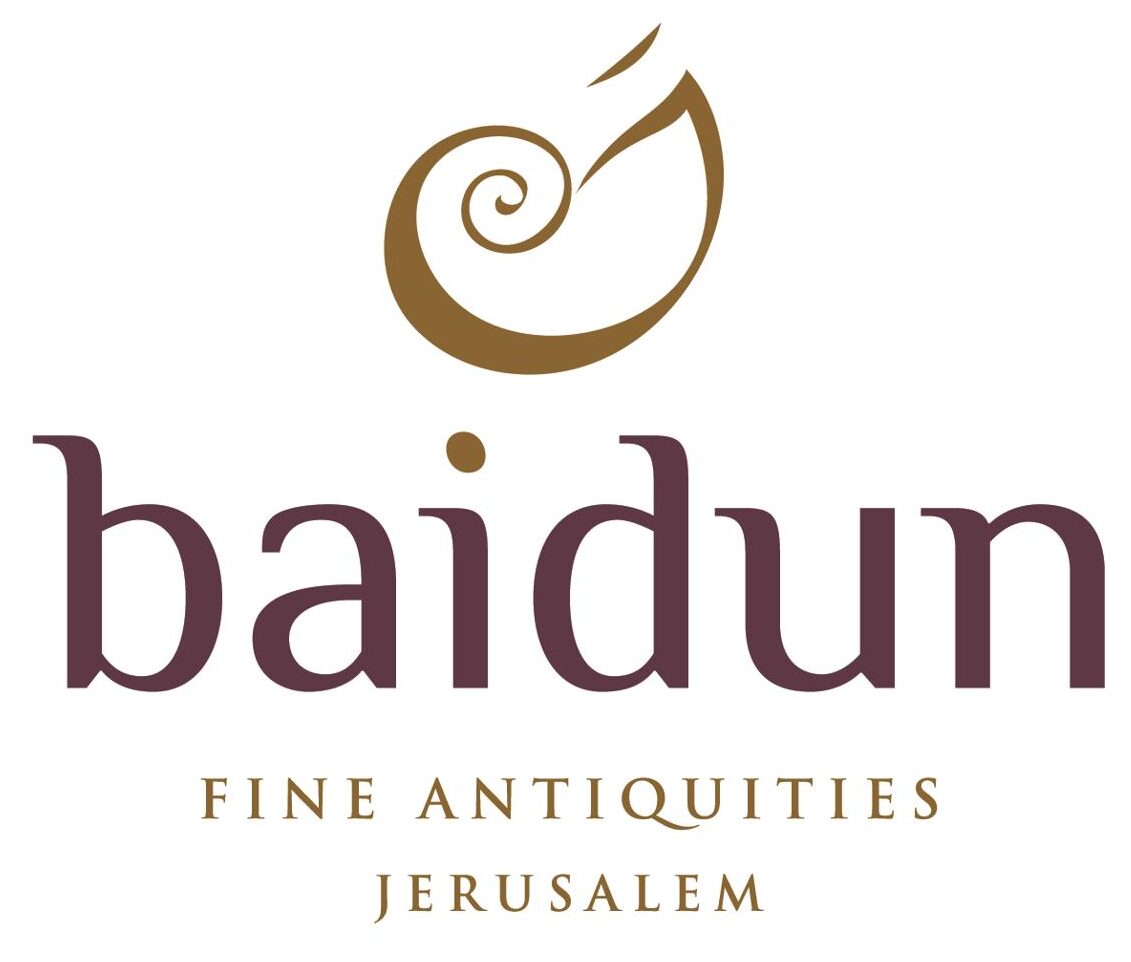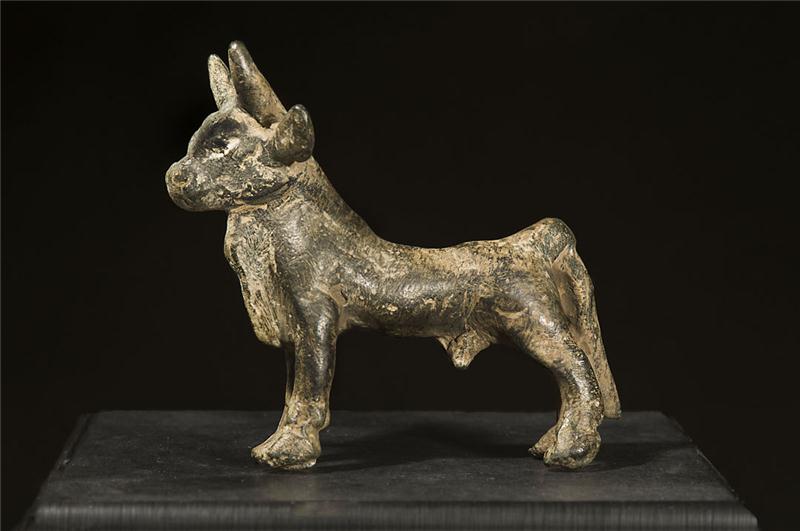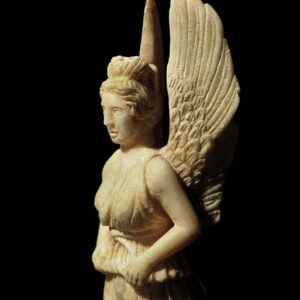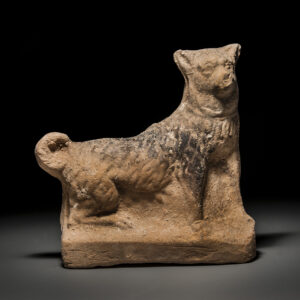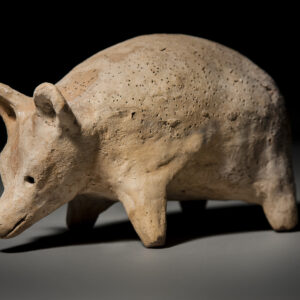This imposing sculpture of a bull is an important survival from the Sabaean kingdom, dating to around the first century C.E.. It is an intriguing combination of the naturalistic and the expressionist, with a realistically modeled head, exaggerated forequarters (giving a very powerful profile) and slender hindquarters that elongate the figure and add to the muscular effect of the shoulders, chest, and head. Detailing is superb, with high, conical horns, oval eyes, high nostrils, a rounded poll to the head, pricked ears, a chest ruff, an elongated tail, and a perineal tuft. The impression thus lent is of strength and immobility, pride and power. Condition is excellent, along with a deep brown patination testifying to long internment. It is likely to have served a cultic and/or votive purpose.
The Sabaeans lived in the area covered by modern-day Yemen and Southern Arabia, although their influence spread very far north and also across the gulf to Southern Egypt and Sudan. Perhaps their greatest claim to fame is the biblically-attested Queen of Sheba (= Sabaea), although no historical sources can fully express the archaeologically-visible richness of their culture and the importance the Sabaeans played in Eastern Mediterranean trade networks up to and including the Roman Empire. Their art is an intriguing combination of ‘modern’ themes and ancient techniques, displaying many classical tenets but with interesting expressionistic attributes (i.e. elongations, inset eyes etc). Unlike later pieces, early Sabean art (i.e. early 1st millennium B.C.E.) is rarely anthropomorphic, with deities being intimated by reference to their animal form: Ilumquh, for example, is usually represented by a bull. The supreme god appears to have been Almaqah, the god of the sun. They used the Zabur and Musnad alphabets for cursive and ceremonial purposes, respectively, and are particularly known for their anthropomorphic funerary markers. The wide perspective on the current piece requires evocation of the Eastern Mediterranean and Middle Eastern fascination with bulls, known as tauromaquia, which dates back as far as the Neolithic site of Catal Huyuk in Turkey and still survives today in Spain and France as bullfighting. The power of the bull, and the wealth that the ownership thereof implied made them a potent symbol to many groups, although not all linked them to a specific deity as did the Sabaeans. This piece would have adorned a shrine in a prosperous household or religious building and was probably intentionally interred for votive purposes. This is a rare and attractive piece of ancient art, which would be a credit to any good collection.



